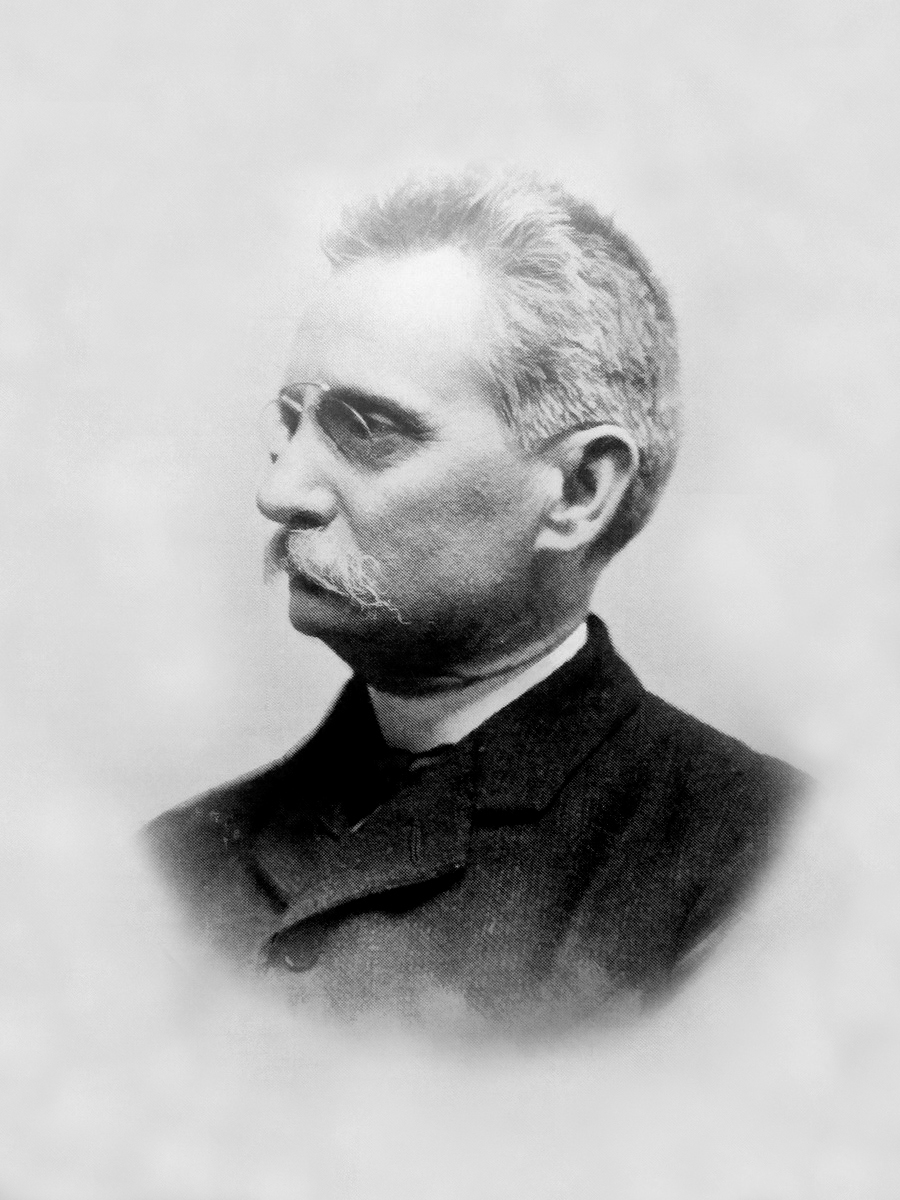Lluís Domènech i Montaner
 Lluís Domènech i Montaner (; 21 December 1850 – 27 December 1923) was a Catalan architect who was very much involved in and influential for the Catalan ''Modernisme català'', the Art Nouveau/Jugendstil movement. He was also a Catalan politician.
Lluís Domènech i Montaner (; 21 December 1850 – 27 December 1923) was a Catalan architect who was very much involved in and influential for the Catalan ''Modernisme català'', the Art Nouveau/Jugendstil movement. He was also a Catalan politician.Born in Barcelona, he initially studied physics and natural sciences, but soon switched to architecture. He was registered as an architect in Barcelona in 1873. He also held a 45-year tenure as a professor and director at the Escola d'Arquitectura, Barcelona's school of architecture, and wrote extensively on architecture in essays, technical books and articles in newspapers and journals.
His most famous buildings, the Hospital de Sant Pau and Palau de la Música Catalana in Barcelona, have been collectively designated as a UNESCO World Heritage Site.
As an architect, 45-year professor of architecture and prolific writer on architecture, Domènech i Montaner played an important role in defining the ''Modernisme arquitectonic'' in Catalonia. This style has become internationally renowned, mainly due to the work of Antoni Gaudí. Domènech i Montaner's article "En busca d'una arquitectura nacional" (In search of a national architecture), published 1878 in the journal ''La Renaixença'', reflected the way architects at that time sought to build structures that reflected the Catalan character.
His buildings displayed a mixture between rationalism and fabulous ornamentation inspired by Spanish-Arabic architecture, and followed the curvilinear design typical of Art Nouveau. In the ''El castell dels 3 dragons'' restaurant in Barcelona (built for the World's Fair in 1888), which was for many years the Zoological Museum, he applied very advanced solutions (a visible iron structure and ceramics). He later developed this style further in other buildings, such as the Palau de la Música Catalana in Barcelona (1908), where he made extensive use of mosaic, ceramics and stained glass, the Hospital de Sant Pau in Barcelona, and the Institut Pere Mata in Reus.
Domènech i Montaner's work evolved towards more open structures and lighter materials, evident in the Palau de la Música Catalana. Other architects, like Gaudí, tended to move in the opposite direction.
Domènech i Montaner also played a prominent role in the Catalan autonomist movement. He was a member of the La Jove Catalunya and El Centre Català and later chaired the Lliga de Catalunya (1888) (Catalan League) and the Unió Catalanista (1892) (Catalan Union). He was one of the organisers of the commission that approved the ''Bases de Manresa'', a list of demands for Catalan autonomy. He was a member of the Centre Nacional Català (1889) and Lliga Regionalista (1901), and was one of the four parliamentarians who won the so-called "candidature of the four presidents" in 1901. Though re-elected in 1903, he abandoned politics in 1904 to devote himself fully to archeological and architectural research.
He died in Barcelona in 1923 and was buried in the Sant Gervasi Cemetery in that city. Provided by Wikipedia
